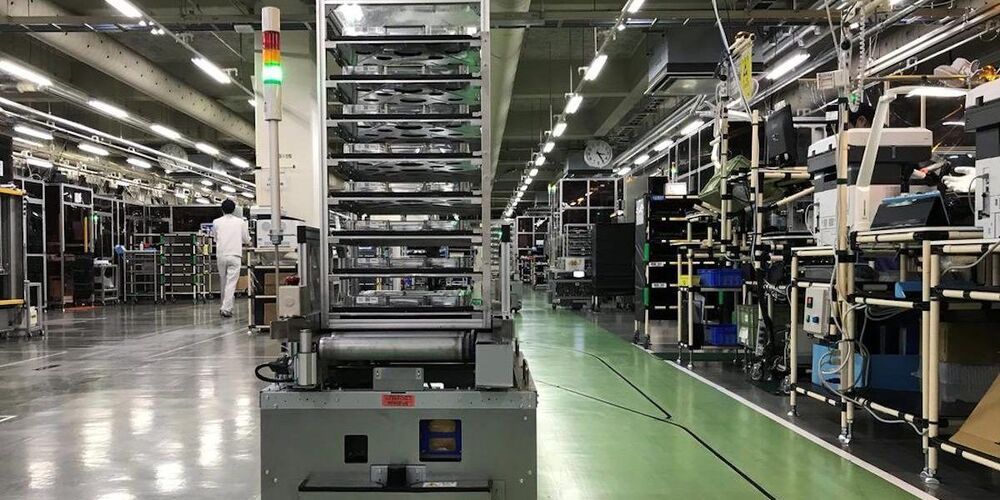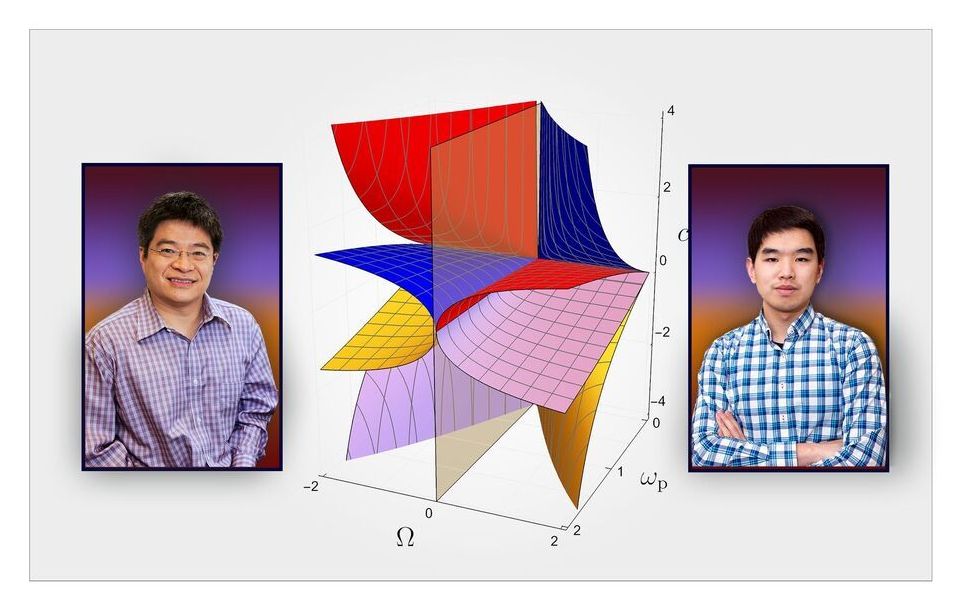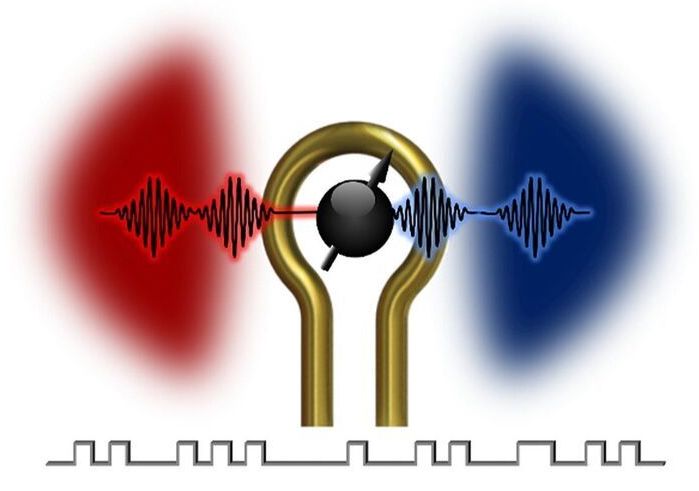IBM chief data scientist John Thomas makes the case for building AI factories to increase adoption of best data science practices at scale.



Scientists have discovered a novel way to classify magnetized plasmas that could possibly lead to advances in harvesting on Earth the fusion energy that powers the sun and stars. The discovery by theorists at the U.S. Department of Energy’s (DOE) Princeton Plasma Physics Laboratory (PPPL) found that a magnetized plasma has 10 unique phases and the transitions between them might hold rich implications for practical development.
The spatial boundaries, or transitions, between different phases will support localized wave excitations, the researchers found. “These findings could lead to possible applications of these exotic excitations in space and laboratory plasmas,” said Yichen Fu, a graduate student at PPPL and lead author of a paper in Nature Communications that outlines the research. “The next step is to explore what these excitations could do and how they might be utilized.”
You don’t need to be a roboticist to make Spot dance. Learn how Spot’s Choreographer software and athletic intelligence bridge the gap between the creative and the technical process. https://bit.ly/36xIbkA
Bringing It All Together
These different approaches to authoring dance sequences can be combined and layered in Choreographer to create the intricate results showcased in the “Spot’s On It” video. For example, in the “Ripples” sequence with seven Spots performing a wave-like dance, we used both animation and standard Choreographer workflows. We set the steps and body positions with stock move blocks, but wanted a more fluid effect in the arm motions. Animation allowed us to get precisely the desired arm movement, while the layering framework enabled us to combine the animated arm motion with the stock moves, resulting in the best of both worlds.
With these different design techniques in conjunction with Spot’s built-in athletic intelligence, it’s easy to create dances that look fluid and natural, without overtaxing either your choreographer or your robot. Learn more about the Choreographer software in our Developer Documentation or reach out to our sales team about getting started.

Many of us swing through gates every day—points of entry and exit to a space like a garden, park or subway. Electronics have gates too. These control the flow of information from one place to another by means of an electrical signal. Unlike a garden gate, these gates require control of their opening and closing many times faster than the blink of an eye.
Scientists at the U.S. Department of Energy’s (DOE) Argonne National Laboratory and the University of Chicago’s Pritzker School of Molecular Engineering have devised a unique means of achieving effective gate operation with a form of information processing called electromagnonics. Their pivotal discovery allows real-time control of information transfer between microwave photons and magnons. And it could result in a new generation of classical electronic and quantum signal devices that can be used in various applications such as signal switching, low-power computing and quantum networking.
Microwave photons are elementary particles forming the electromagnetic waves employed in, for example, wireless communications. Magnons are the particle-like representatives of “spin waves.” That is, wave-like disturbances in an ordered array of microscopically aligned spins that occur in certain magnetic materials.

SMRs are cheaper and quicker to build than traditional reactors, and can also be deployed in remote regions and on ships and aircraft. Their “modular” format means they can be shipped by container from the factory and installed relatively quickly on any proposed site.
SHANGHAI, July 13 (Reuters) — China has started construction of the first commercial onshore nuclear project using its homegrown “Linglong One” small modular reactor (SMR) design, the China National Nuclear Corporation (CNNC) said on Tuesday, about four years later than planned.
CNNC originally aimed to start building the project at the Changjiang nuclear reactor complex on the island province of Hainan in 2017, but it has been subject to regulatory delays.
The “Linglong One”, also known as the ACP100, was the first SMR to be approved by the International Atomic Energy Agency in 2016. Each unit has power generating capacity of 125 megawatts (MW).
Trapped ions discovered at midlatitudes can have energies exceeding 100 megaelectron volts per nucleon. Their detection adds to our understanding of the powerful radiation environment around Jupiter.
Jupiter’s planetary radiation environment is the most intense in the solar system. NASA’s Juno spacecraft has been orbiting the planet closer than any previous mission since 2016, investigating its innermost radiation belts from a unique polar orbit. The spacecraft’s orbit has enabled the first complete latitudinal and longitudinal study of Jupiter’s radiation belts. Becker et al. leverage this capability to report the discovery of a new population of heavy, high-energy ions trapped at Jupiter’s midlatitudes.
The authors applied a novel technique for detecting this population; rather than using a particle detector or spectrometer to observe and quantify the ions, they used Juno’s star-tracking camera system. Star trackers, or stellar reference units (SRUs), are high-resolution navigational cameras whose primary mission is using observations of the sky to compute the spacecraft’s precise orientation. The SRU on board the Juno spacecraft is among the most heavily shielded components, afforded 6 times more radiation protection than the spacecraft’s other systems in its radiation vault.

The smaller transistors get, the more expensive they get, and similarly, the harder it becomes for foundries to compete at the cutting edge. We’ve been seeing this since the introduction of TSMC and Samsung’s 7nm node (comparable to Intel’s 10nm process). Global Foundries was the first to drop out of the race, and Intel has been stuck on its 14nm node for nearly seven years (although the chipmaker is trying to make a comeback). Samsung is the third major foundry struggling to keep up with TSMC in the race to make the smallest transistors.
Samsung’s 10nm and 7nm nodes were both on par with TSMC’s, at least in terms of transistor density, packing 0.52 and 0.95 million transistors per square mm. Meanwhile, Intel’s 10nm node was denser than both, with a density of 1.06 million per square mm. Starting with the 5nm node, Samsung’s nodes have fallen behind. The Korean foundry’s 5nm node has a transistor density of 1.27 million (per mm2), compared to 1.73 million on TSMC’s 5nm and 1.8 million on Intel’s 7nm.
The deltas become even wider with the 3nm node, with Samsung expected to offer a density of just 1.7 million, compared to 2.9 million on TSMC’s 3nm (despite not using GAA), and 3 million on Intel’s 3nm. Samsung has continued to lose foundry customers, with both Qualcomm and MediaTek shifting to TSMC due to poor supply. It’s being reported that NVIDIA too will rely on TSMC’s 5nm for its next-gen GPUs, resulting in the loss of another major client for the former. At this rate, Samsung might just throw in the towel even before its 3nm node begins mass production.
Engineers at the University of California San Diego developed a new wearable device that turns the touch of a finger into a source of power for small electronics and sensors. The device is a thin, flexible strip worn on a fingertip and generates small amounts of electricity when a person’s finger sweats or presses on it.
More interestingly, this sweat-powered device is capable of generating power even when the wearer is asleep or sitting still. This could open up some very interesting possibilities in the wearable space, as the researchers have now figured out how to harness the energy that can be extracted from human sweat even when a person is not moving.

Scientists have been turning to the animal world for inspiration for a long time, including for medicines. And many different types of animals have been responsible for this inspiration, including sharks, spiders, and… roadkill.
Hosted by: Michael Aranda.
SciShow has a spinoff podcast! It’s called SciShow Tangents. Check it out at http://www.scishowtangents.org.
———
Support SciShow by becoming a patron on Patreon: https://www.patreon.com/scishow.
———
Huge thanks go to the following Patreon supporters for helping us keep SciShow free for everyone forever:
Chris Peters, Matt Curls, Kevin Bealer, Jeffrey Mckishen, Jacob, Christopher R Boucher, Nazara, charles george, Christoph Schwanke, Ash, Silas Emrys, KatieMarie Magnone, Eric Jensen, Adam Brainard, Piya Shedden, Alex Hackman, James Knight, GrowingViolet, Drew Hart, Sam Lutfi, Alisa Sherbow, Jason A Saslow.
———
Looking for SciShow elsewhere on the internet?
Facebook: http://www.facebook.com/scishow.
Twitter: http://www.twitter.com/scishow.
Tumblr: http://scishow.tumblr.com.
Instagram: http://instagram.com/thescishow.
———
Sources:
Intro.
https://lemelson.mit.edu/resources/otto-lilienthal.
https://www.hookandloop.com/invention-velcro-brand/
https://biomimicry.org/biomimicry-examples/#construction.
Frogs.